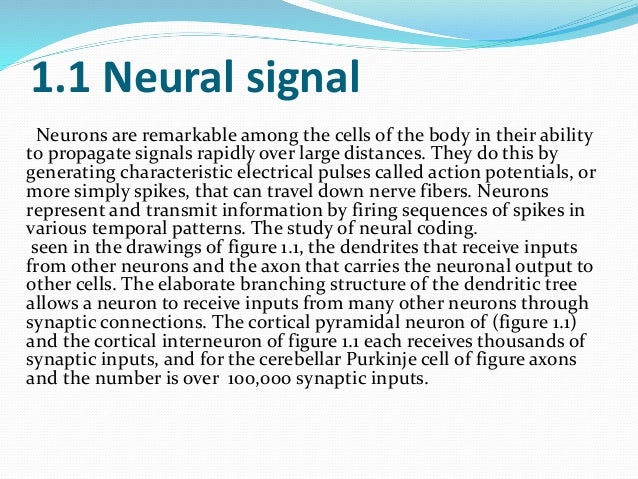

we create and develop computational models and techniques to infer the hidden states (dynamics) of the neural systems from sparse observations.To meet our objective, we create and develop innovative approaches to overcome the lack of observability in neural systems and to enhance the controllability of neural systems as follow: The Scientist and Engineers Guide to Digital Signal Processing. This challenge, in Control Systems, is known as the lack of observability (observability is a measure that indicates how well the internal states of a system can be inferred from the knowledge of its external outputs). selection in both neural networks and more traditional DSP algorithms. The main challenge toward understanding the mechanisms of neural information processing is the difficulty of inferring information (e.g., coding mechanism of somatosensory system) from incomplete and sparse observations (e.g., neural activity (spikes) of few cortical neurons). neurodsp is a collection of approaches for applying digital. For example, closed loop neuro-stimulators can be used to adaptively intervene with the neural system of patients with neurological disorders in order to restore the normal activity. Tools to analyze and simulate neural time series, using digital signal processing. Understanding neural information processing will result in the development of computational algorithms & engineering techniques for optimal controlling the functionality of neural systems. Our goal is to understand how information is represented, propagated and computed. The main objective of our lab is to uncover information processing mechanisms of neural systems. The Neural System and Brain Signal Processing Lab (NSBSPL) at The Krembil Research Institute, UHN develops and uses advanced methods in Computational Neuroscience and Engineering as well as cutting-edge Neurotechnology to uncover information processing mechanisms of neural systems, in order to treat neurological disorders and to advance biologically-inspired computational frameworks.


 0 kommentar(er)
0 kommentar(er)
